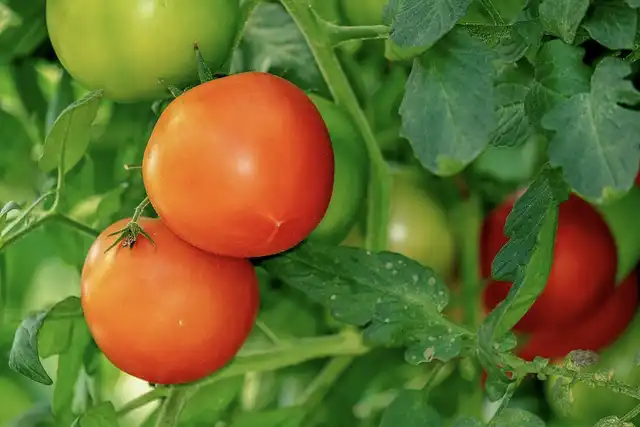Tomato plants emit a scent to resist bacterial attacks. This aroma – or volatile compound – is hexenyl butanoate (HB). A team from the Research Institute for Plant Molecular and Cellular Biology (IBMCP), a joint centre of the Universitat Politècnica de Valencia (UPV) and the Spanish National Research Council (CSIC), has discovered that its mode of action is novel, as it works independently of the classic hormone involved in the process of stomatal closure (abscisic acid). In this way, it is possible to protect plants from threats like drought or pathologies that could threaten crops. The work has been published in the Horticulture Research Journal.
“Given the importance of stomatal control in water stress, HB treatments alleviate the symptoms caused by drought and improve the productivity of crops such as tomato. Therefore, in the context of the severe drought we are currently experiencing in Spain, the development of this type of compound is a breakthrough to address this situation,” says Purificación Lisón, IBMCP researcher and professor in the Department of Biotechnology at the School of Agricultural Engineering and Environment (ETSIAMN) of the UPV.
Among other advantages, the UPV and CSIC team points out that the HB compound resists diseases that enter the stomata. In the case of tomatoes, its use protects against Pseudomonas syringae. This bacterium causes significant damage, particularly in cold and wet weather, making the fruit unsuitable for marketing.
The IBMCP team has also demonstrated its usefulness in other crops, such as potatoes, where it has increased resistance to Phytophthora infestans. This parasite causes a disease known as late blight or downy mildew, which causes significant losses.
To study the mode of action of the HB compound, the IBMCP team used different strategies: genetic, using biosynthesis mutants in specific molecules; pharmacological, with exogenous treatments with inhibitors of the possible processes involved; biochemical, through the analysis to detect phosphorylations; and transcriptomic, using the new massive sequencing techniques (RNAseq), which allow understanding the reprogramming mechanisms of the treated plants in terms of mRNAs.
“Our results support the use of HB as a bioactive natural compound for more sustainable agriculture. Currently, there are no alternative products on the market that can induce stomatal closure,” adds Mª Pilar López Gresa, also a researcher at the IBMCP (CSIC–UPV) and professor at the Biotechnology Department of the ETSIAMN-UPV.
As stomatal closure is involved in a large number of processes in the plant, the IBMCP team is investigating new uses for HB, such as synchronising flowering, inducing flowering and fruit set, and promoting ripening, in addition to its use in combating drought and bacteria or parasites.
Read the paper: Horticulture Research
Article source: Universitat Politècnica de València
Image: tomato plant. Credit: 1195798 / Pixabay






